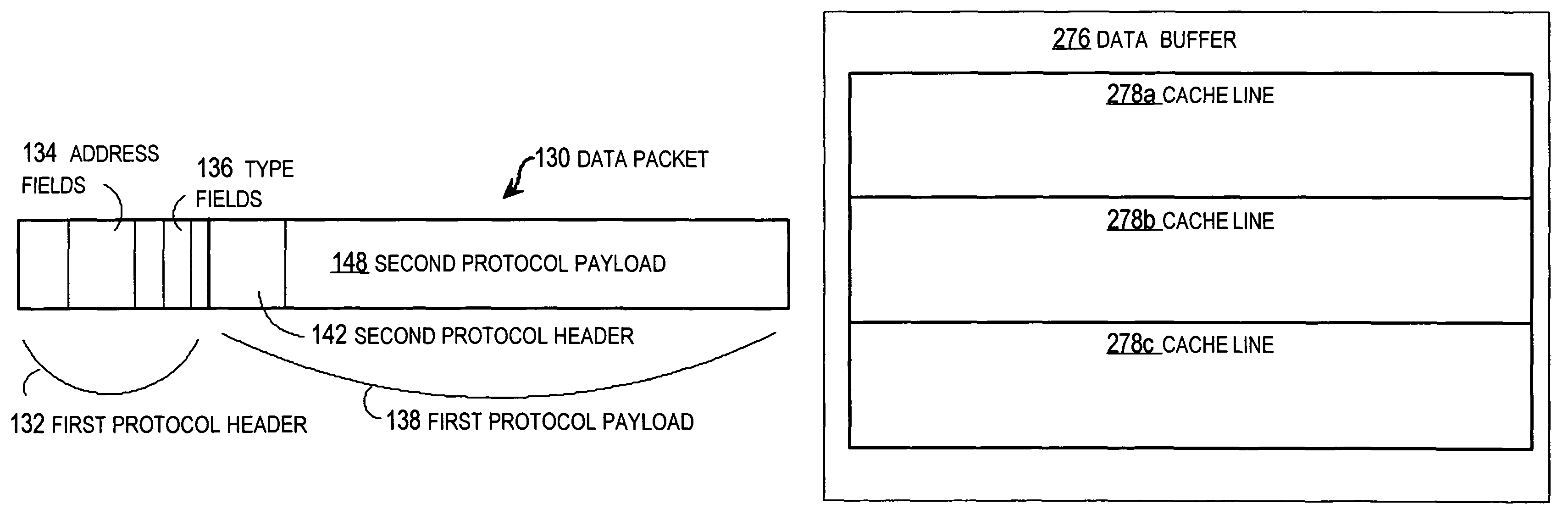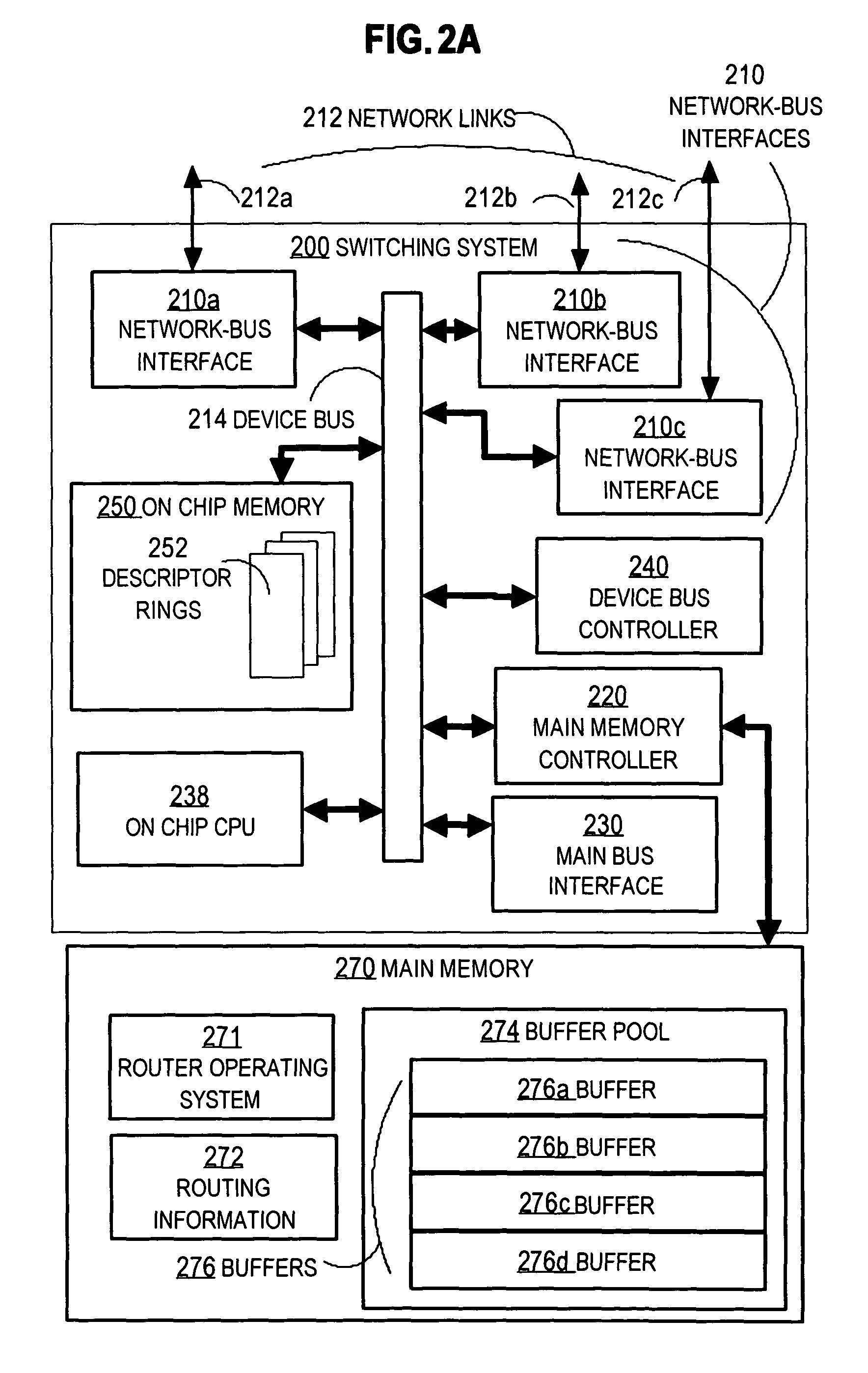Method and apparatus for classifying a network protocol and aligning a network protocol header relative to cache line boundary
a network protocol and cache line technology, applied in data switching networks, multiplex communication, store-and-forward switching systems, etc., can solve problems such as reducing flexibility, software penalty for examining packet headers that are not aligned, and obsolete network devices relying on hardware. to achieve the effect of reducing the cpu processing load
- Summary
- Abstract
- Description
- Claims
- Application Information
AI Technical Summary
Benefits of technology
Problems solved by technology
Method used
Image
Examples
Embodiment Construction
[0033]A method and apparatus are described for classifying network packets in hardware. In the following description, for the purposes of explanation, numerous specific details are set forth in order to provide a thorough understanding of the present invention. It will be apparent, however, to one skilled in the art that the present invention may be practiced without these specific details. In other instances, well-known structures and devices are shown in block diagram form in order to avoid unnecessarily obscuring the present invention.
[0034]In the following description, embodiments are described in the context of routing packets based on information in the data link layer (layer 2) and internetwork layers (layer 3) and in between layer (layer 2.5); but, the invention is not limited to this context. In some embodiments, the routing of packets may be based on information in the header or payloads of protocols involving different layers.
1.0 Network Overview
[0035]FIG. 1A is a block d...
PUM
 Login to View More
Login to View More Abstract
Description
Claims
Application Information
 Login to View More
Login to View More - R&D
- Intellectual Property
- Life Sciences
- Materials
- Tech Scout
- Unparalleled Data Quality
- Higher Quality Content
- 60% Fewer Hallucinations
Browse by: Latest US Patents, China's latest patents, Technical Efficacy Thesaurus, Application Domain, Technology Topic, Popular Technical Reports.
© 2025 PatSnap. All rights reserved.Legal|Privacy policy|Modern Slavery Act Transparency Statement|Sitemap|About US| Contact US: help@patsnap.com



